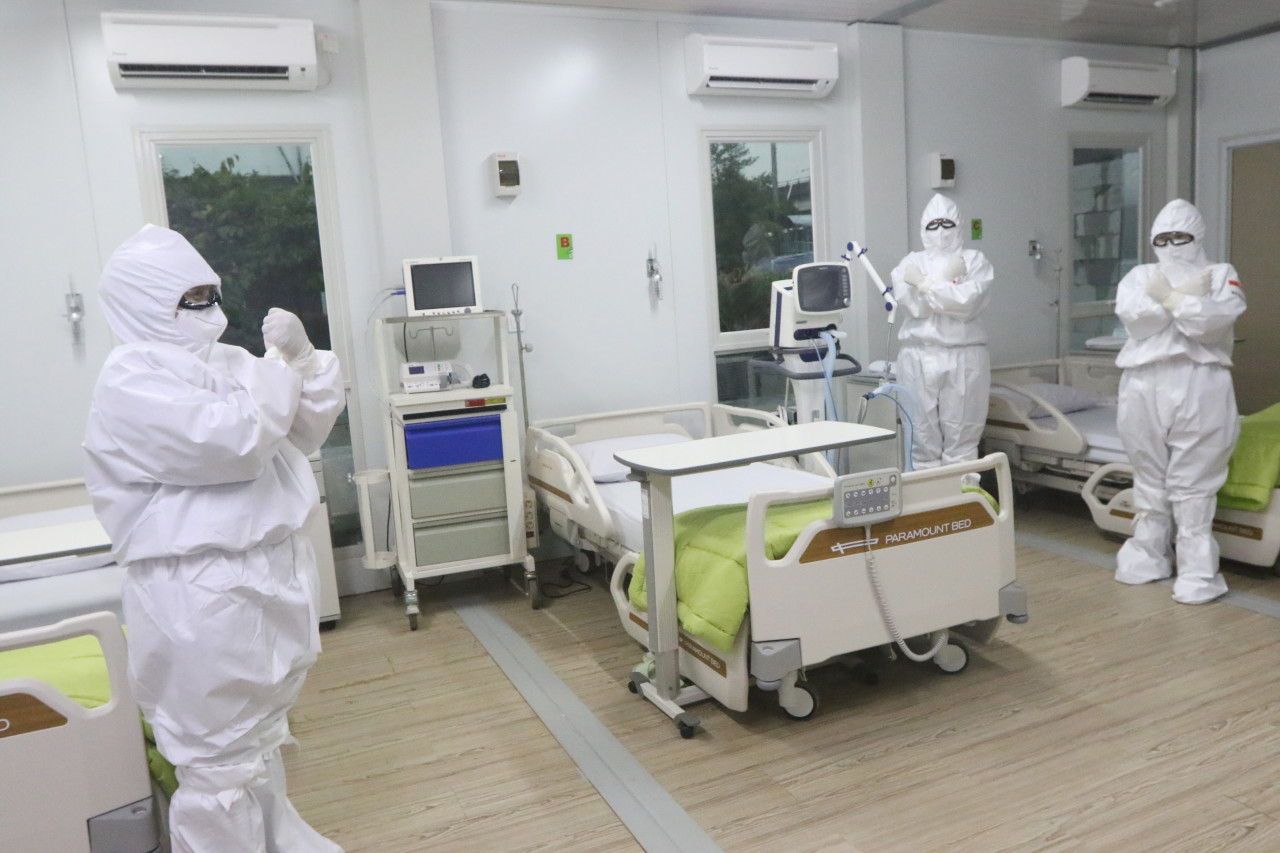What should our healthcare reform focus on after COVID-19?

June 23, 2020
Over the past few years, Indonesia has made great efforts to improve its national healthcare system. Additionally, since the inception of the National Health Insurance (JKN) in 2014, Indonesia has invested substantially in healthcare services. As a result, over 215 million people are now covered by the national health scheme.
It is also inevitable that there will be a fair number of challenges ahead, despite these commendable reforms and their concrete results on the ground. These include sustainable funding, disparities between rural and urban areas in terms of access to health services and health outcomes and persistent understaffing in regard to adequately trained healthcare professionals.
There is no doubt that the government is well aware of these challenges and is consistently strengthening its efforts to tackle them.
However, what the COVID-19 pandemic has revealed is that the inadequate national response to the crisis is imputable to the same persistent and structural problems that have afflicted the country’s healthcare system over the past two decades.
These are mainly the ineffectiveness of creating a culture of data collection and use at regional and national levels, the inability to sustain and strengthen operational disease-surveillance mechanisms and infrastructure and the lack of effective strategic collaboration and partnerships to truly drive change.
Like many developing countries, Indonesia’s healthcare system is experiencing a huge data problem. Some think its origin is decentralization and a lack of national coordination, while others claim it is due to inadequate funding, lack of human resources and weak infrastructure and technology, while officials often brandish the “17,000 islands excuse.”
However, the fact of the matter is that rigorous collection of data and a well-coordinated system to disseminate it are neither systemic nor structurally entrenched. Most of the data sources are estimations, a product of statistical modeling or global monitoring; and only a fraction of data is locally generated.
Manually recorded health data serve only for healthcare delivery or administrative purpose. They are rarely used for epidemiologic research or for studying and improving patients’ care. This suggests that for years, health decisions in Indonesia have been based on data that were not credible, accurate or timely.
Therefore, in such circumstances, it is understandably difficult for the government and national institutions to accurately plan, budget, fund, monitor and evaluate national health programs or generate evidence about the effectiveness of existing policies.
The coronavirus outbreak and the initial testing fiasco have highlighted the need to strengthen the National Center of Disease Control and Environmental Health (P2PL). The center has been “sitting on the sidelines” in the fight against COVID-19, thus depriving the nation of benefiting from its accumulated knowledge and experience in disease-outbreak response.
Yet, there are ample arguments and a strong case to support urgent and adequate investment in public health surveillance. Both infectious diseases and non-communicable diseases are a major driver of morbidity and mortality in Indonesia. Beyond the toll on health, they also impose a significant burden on the national economy since the productivity loss to disease is estimated at close to 30 percent of gross domestic product annually
More than 700,000 Indonesians a year travel to Singapore and Malaysia for medical treatment. The direct and indirect costs of such medical tourism amount to nearly US$4 billion a year. This problem has neither been acknowledged nor addressed head-on. Denying it illustrates the insular and inward-looking approach characterizing national healthcare strategy.
In a vast country like Indonesia, health partnerships could play an important role in addressing the existing disparities with regard to the availability of trained health personnel across the archipelago and the need to improve clinical and service quality to a level that meets the population’s expectations. However, it requires keeping an open mind about the sources that learning and value can come from, and being receptive to collaborating with others. It also requires leadership to harness the potential for international collaboration and to make it more sustainable.
The Fourth Industrial Revolution (Industry 4.0) is an opportunity for Indonesia to create more jobs around the digital economy and join the top-10 largest economies in the world by 2030. However, the country’s current state of health care represents one of the largest impediments to achieving its economic potential. COVID-19 represents an excellent opportunity for effective root and branch healthcare reform.
“Quality” has eclipsed “access” as a driver of survival and Indonesia’s focus on a volume-based healthcare development path is proving inefficient and expensive. There is no doubt that technology presents huge potential in solving some of the system’s perennial problems and enabling value-based measurement, delivery and payment.
However, creating a culture of accountability, tracking quality or outcomes and greater collaboration will not be attained through shiny technology alone. To achieve real transformation, public health leaders need vision, courage and purpose, to not only identify the “right decisions” supported by scientific evidence, but also to ensure that the right decisions happen and are implemented.
President Joko "Jokowi" Widodo has made it clear that efforts need to be made to build a more resilient healthcare system. The current COVID-19 crisis holds lessons for what we can do differently in the future.
While it may be too soon to know what this future will look like, it is not too soon to start looking for opportunities to help shape it together.
Obtained from:
https://www.thejakartapost.com/academia/2020/06/23/what-should-our-healthcare-reform-focus-on-after-covid-19.html

